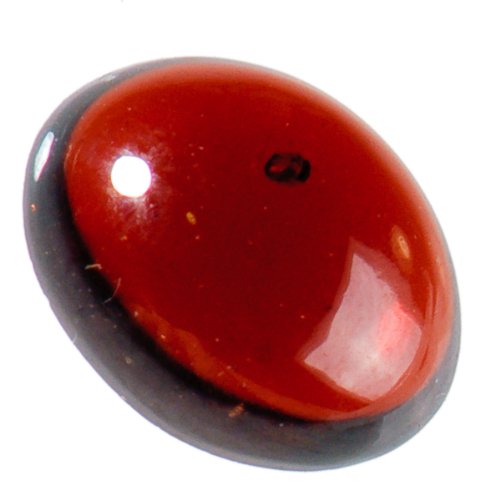| 8x6mm Genuine Garnet Oval Cabochon - Pack Of 2 Product Brand : Wire-Sculpture |
Our Price :


See All Similar Products » |
|
8x6mm Genuine Garnet Oval Cabochon - Pack Of 28x6mm Genuine Garnet Oval Cabochon - Pack Of 2
8x6mm Genuine Garnet Oval Cabochon - Pack Of 2 Overviews Use this gorgeous garnet cabochon in your next jewelry making project. Its red hue is so visually appealing, nobody will be able to take their eyes off your jewelry! 8x6mm Genuine Garnet Oval Cabochon - Pack Of 2 Features
Available Stores


  
|
A wee range of metals colors most gems. The most leading of which are chromium, iron, manganese, titanium, and copper. Chromium gives the intense red of ruby and great greens of emerald and demantoid garnet. Iron causes the more subtle reds, blues, greens, and yellow in almandine garnet, spinels, sapphires, peridots, and chrysoberyls. The most prized blue sapphires are colored by titanium with iron. Copper gives the blues and greens of turquoise and malachite. Manganese gives the pink of rhodonite and orange of spessartine garnet.
Genuine Garnet Ring
In most gems these metallic elements occur as impurities commonly in wee amounts. Such gems can show a wide range of separate colors and because they consist of such small amounts of impurity the color of some may be altered, enhanced or destroyed by heating or by irradiation with gamma rays and high vigor sub atomic particles.
In a few gems the coloring elements form an requisite part of the chemical composition for example the copper in turquoise, manganese in rhodonite, and iron in peridot and almandine garnet. These gems have a very wee color range, commonly restricted to shades of one color. Such colors are stable and impossible to alter greatly without destroying the mineral.
Crystal structure affects the way in which light travels through a substance. In all minerals other than cubic and non-crystalline minerals, light entering the mineral is split into two rays that tour at separate speeds and along separate paths through the crystal structure.
In colored minerals the rays may be differently absorbed within the crystal structure and emerge as two or three separate colors or shades of the same color. This consequent is called pleochroism and can be particularly helpful in identifying gemstones.
Pleochroism causes the directional variations in color seen in many gem minerals. Therefore, a gemstone looks a separate color when turned and looked at from separate directions. Viewing these separate colors is made easier with the use of a small instrument called a dichroscope. A dichroscope enables two colors to be seen at the same time through the eyepiece while turning the gemstone. Dichroic gemstones have two colors and trochroic gemstones have three separate colors or shades of color when viewed from separate directions.
The great colors of opal and diamonds arise when white light is split into its constituent colors, the colors of the rainbow. White light consists of electromagnetic waves of separate wavelengths, each wavelength appearing a singular color.
Dispersion is the origin of fire in gemstones. The fire of a gemstone is seen as flashes of the colors of the rainbow as the gemstone or light source are moved. When light enters a mineral the discrete wavelengths are differently refracted, red the least and violet the most, so that the color spectrum is spread out. Gem minerals vary greatly in their potential to disperse light. The dispersion can be measured as the numerical variation in the middle of the refractive indices of definite blue and red wavelengths.
Interference causes the iridescence in labradorite and the rainbow effects seen in cleavage cracks and on tarnished surfaces. When light falls on very thin mineral layers it is reflected from both the upper and lower surfaces. Since the reflected rays have traveled separate distances, the wave troughs and peaks of the discrete wavelengths either coincide or are out of step. A color is enhanced if they coincide but litter or no color is seen for out of step wavelengths.
In opal, which is composed of transparent commonly sized and stacked spheres, light is scattered by the network of spaces in the middle of the spheres. Interference occurs in the middle of the emerging rays, the range of colors seen depending on the size of the sphere and the angle at which the opal is viewed. Larger spheres furnish a complete spectrum as the opal is tilted, but small spheres generate only blues and violets.
Genuine Garnet Ring No URLGenuine Garnet Ring
Recommend : We have selected quality products for you here Genuine Aquamarine Rings Blue Pearl Earring Cuban Link Gold Chains








No comments:
Post a Comment